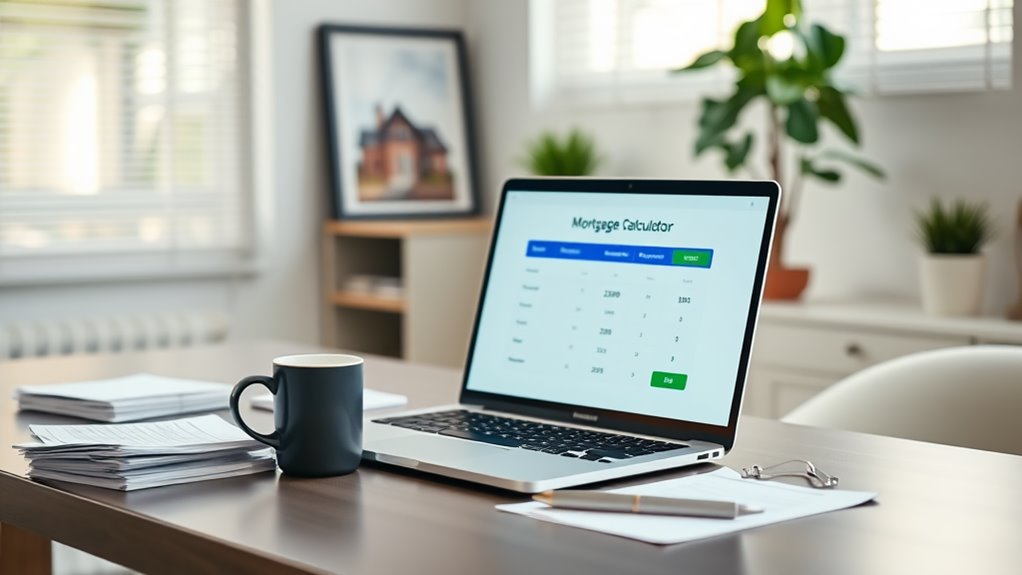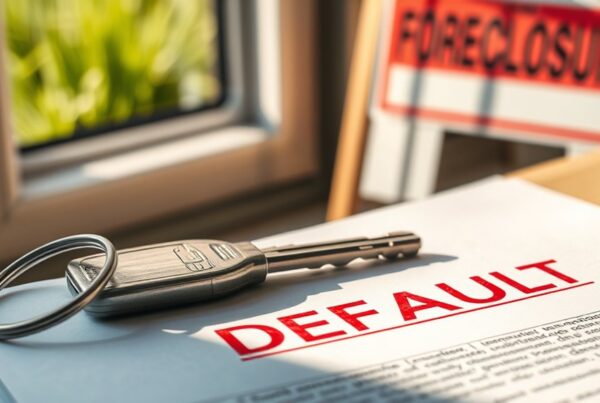A no-closing-cost refinance lets you refinance your mortgage without paying upfront fees by rolling them into the loan or accepting a slightly higher interest rate. This approach eliminates immediate out-of-pocket expenses but increases your principal or long-term interest payments. It’s ideal if you plan to sell soon or need to preserve cash flow. For longer-term homeowners, the trade-offs might outweigh the benefits. Discover how this option aligns with your financial goals for deeper insights.
Key Takeaways
- A no-closing-cost refinance rolls fees into the loan or increases the interest rate, avoiding upfront out-of-pocket expenses.
- It eliminates immediate closing costs but results in higher loan balances or long-term interest payments.
- Lenders cover closing costs in exchange for a higher interest rate, typically 0.25 to 0.5 percentage points higher.
- Ideal for homeowners planning to sell or refinance within a few years due to shorter breakeven periods.
- Long-term homeowners may pay more in interest, making it less cost-effective over extended loan terms.
Understanding No-Closing-Cost Refinances
A no-closing-cost refinance eliminates upfront fees by rolling them into your loan or increasing your interest rate. Instead of paying closing costs out of pocket, typically 3% to 6% of your loan amount, your lender offsets these fees by either adding them to your loan balance or charging a higher interest rate. This means your loan principal increases, or you pay more in interest over time. While you avoid upfront fees, this structure often results in higher long-term costs. For homeowners planning to sell or refinance again within a few years, a no-closing-cost refinance can be beneficial, as they avoid paying full closing costs upfront. However, if you plan to keep the loan long-term, the increased loan balance or higher interest rate may outweigh the initial savings. Consider seller financing if traditional refinancing options don’t align with your financial goals. Evaluate your financial goals to determine if this refinancing option aligns with your needs.
Mechanics of No-Closing-Cost Refinancing

No-closing-cost refinancing eliminates upfront fees by either increasing your loan principal or adjusting your interest rate. Lenders typically raise the rate by 0.25 to 0.5 percentage points to offset these costs, ensuring they’re covered over time. Alternatively, you can finance closing costs by adding them to your loan balance, reducing immediate expenses but increasing long-term debt.
Financing Closing Costs
Financing closing costs in a no-closing-cost refinance involves rolling them into the loan principal, which increases the total loan amount and monthly payments. When choosing this option, you avoid upfront expenses but pay higher interest on the added loan balance. Lenders often offset waived fees by charging a slightly higher interest rate, spreading the cost over your mortgage term. This approach makes sense if you plan to sell or refinance again soon, as long-term ownership increases total interest paid. For example, adding $6,000 in closing costs to a $200,000 loan at 6.5% raises your monthly payment by $51 and total interest by $3,408 over 15 years. Use this table to compare impacts:
| Loan Amount | Closing Costs | Monthly Impact |
|---|---|---|
| $200,000 | $6,000 | +$51 |
| $250,000 | $7,500 | +$64 |
| $300,000 | $9,000 | +$77 |
Consider using an investment line of credit to manage refinancing costs, as it offers flexible repayment terms and competitive interest rates.
Interest Rate Adjustments
Often, lenders adjust the interest rate in no-closing-cost refinances to compensate for waived fees, typically raising it by 0.25% to 0.5%. This higher interest rate offsets the closing costs they’re absorbing, such as appraisal or origination fees. For example, on a $400,000 mortgage with $8,000 in upfront fees, your rate might increase from 6.5% to 6.75%. While you avoid paying these costs upfront, the adjusted rate leads to higher monthly payments and more total interest paid over the loan term. Since discount points aren’t purchased in a no-closing-cost refinance, you miss out on lowering your rate further. This trade-off means you’ll pay more over time, even though you save on immediate expenses. Carefully compare the long-term costs of this refinance option before deciding, especially if your investment goals involve long-term rental income or short-term projects.
Typical Closing Costs in Refinancing
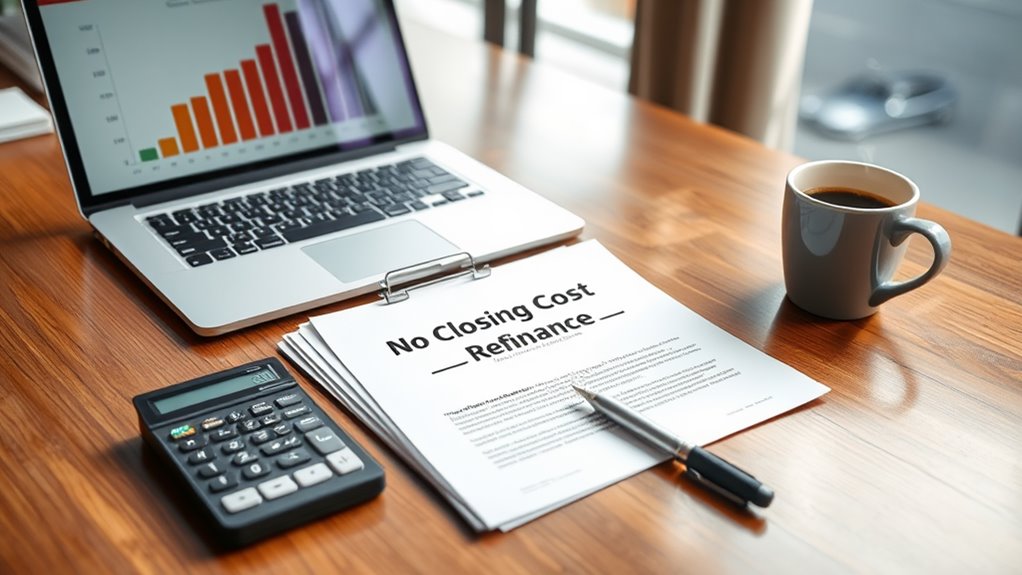
When refinancing a mortgage, you’ll typically encounter closing costs ranging from 2% to 6% of the loan amount, which can average around $5,000 on a $300,000 loan. These refinance closing costs cover various fees and services required during the refinance process, ensuring a smooth shift to your new loan. Here’s a breakdown of common expenses:
- Loan origination fees: These usually cost 0.5% to 1% of your total loan amount.
- Appraisal fees: Expect to pay between $600 and $2,000 to assess your property’s value.
- Title insurance and escrow: These fees often range from $700 to $900 for title searches and insurance.
- Prepaid expenses: You’ll need to cover property taxes and insurance upfront as part of the refinance process.
Other refinancing costs may include recording fees and credit report fees, which vary by lender. Understanding these costs helps you prepare financially for a mortgage refinance. Private lenders often provide quick approval and funding, which can be advantageous during the refinance process.
Impact of Rolling Costs Into Loan Principal

Rolling closing costs into your loan principal increases the total loan balance, such as adding $6,000 to a $150,000 loan. This higher balance raises your monthly payments, like going from $1,307 to $1,359 on a 15-year term at 6.5% interest. You’ll also pay more in total interest over the life of the loan due to the compounded effect on the larger principal. Consider analyzing the price-to-income ratio to ensure the increased loan amount remains manageable relative to your financial situation.
Higher Loan Balance
Including closing costs into your loan principal through refinancing can substantially raise your total loan balance. By rolling refinancing costs into your mortgage, you increase the loan principal, which directly impacts your financial obligations. Consider these key points:
- Adding $6,000 in closing costs to a $150,000 loan raises your principal to $156,000.
- A higher loan balance results in more interest paid—potentially thousands over the loan term.
- Increasing the loan principal reduces your borrower’s equity in the property.
- A larger total loan balance may push your loan-to-value ratio higher, potentially requiring mortgage insurance.
- Rolled-in costs can negatively affect your debt-to-income ratio, making future borrowing more challenging.
This approach doesn’t eliminate costs; it shifts them into your loan, amplifying long-term financial implications. Carefully evaluate how a higher loan balance aligns with your goals before committing to this refinancing strategy.
Increased Monthly Payment
By financing closing costs into your loan principal, you’ll likely see a noticeable increase in your monthly mortgage payment. Adding $5,000 to a $300,000 loan typically raises your monthly payments by $32.80. This higher monthly payment results from a larger loan balance, which also increases your total interest over the loan term—by $6,806.69 in a 30-year example. A higher principal amount shifts more of your payment toward interest early in the amortization schedule. Additionally, the new loan’s higher rate amplifies these costs. While spreading out refinancing expenses may seem convenient, it pushes back your breakeven point, delaying when you start saving from the refinance. This approach can strain your budget and reduce the financial benefits of refinancing in the long term.
Pros of No-Closing-Cost Refinancing
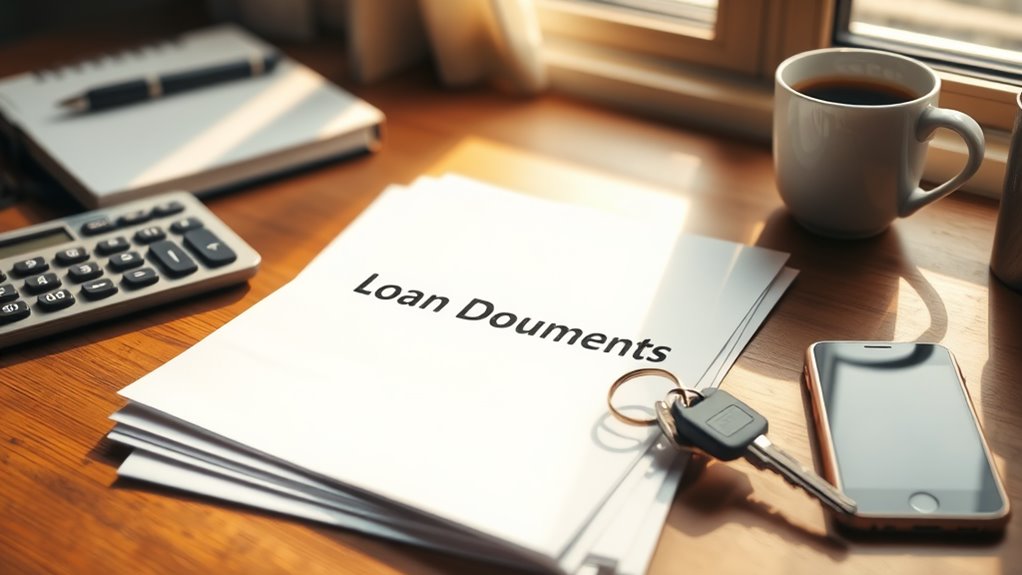
No-closing-cost refinancing removes the upfront financial burden, allowing you to refinance without immediate out-of-pocket expenses. If you plan to sell your home within a few years, this option reduces the breakeven period, ensuring you benefit before moving. By avoiding upfront closing costs, you’ll preserve cash reserves for other priorities like home repairs or emergencies. This approach also offers accessibility to borrowers with limited savings who can’t afford traditional refinancing fees. Keep in mind, you’ll pay a higher interest rate, but this trade-off might align with your short-term goals. Creative financing strategies like this provide flexibility for investors with limited upfront capital.
- Preserve cash reserves: Keep your savings intact while refinancing.
- Reduce breakeven period: Ideal if you don’t plan to stay long-term.
- Eliminate upfront costs: Refinance without draining your finances.
- Accessibility for limited savings: Make refinancing possible without a large upfront investment.
Cons of No-Closing-Cost Refinancing

Although no-closing-cost refinancing eliminates upfront expenses, it often comes with long-term financial drawbacks. You may face a higher interest rate, which increases your total interest paid over the life of the loan. Rolling closing costs into your loan principal raises your loan balance, potentially leading to higher monthly payments and reduced home equity. Over time, this can result in paying more in long-term interest than if you’d paid the closing costs upfront. Additionally, increasing your loan balance might elevate your loan-to-value ratio, which could trigger mortgage insurance or further erode your equity. If you plan to stay in your home long-term, the cumulative costs of a no-closing-cost refinance can outweigh its initial savings. Economic downturns or interest rate hikes could exacerbate these financial challenges, making it even harder to manage higher monthly payments. Consider these trade-offs carefully before proceeding.
| Issue | Impact |
|---|---|
| Higher interest rate | Increases total interest paid |
| Increased loan balance | Raises monthly payments |
| Reduced equity | Lowers home equity |
| Higher loan-to-value | May trigger mortgage insurance |
Who Benefits From No-Closing-Cost Refinancing?

Certain homeowners can substantially benefit from no-closing-cost refinancing. If you’re planning to sell or move soon, avoiding upfront costs makes financial sense. For borrowers with limited cash reserves, this option eliminates the need to deplete savings for closing costs. If you’re seeking immediate cash flow relief, preserving your cash reserves while securing a lower interest rate can help. Short-term homeowners who may refinance again in the near future also benefit by sidestepping initial expenses.
- Planning to sell soon? Avoid upfront closing costs while still lowering monthly payments.
- Tight on cash? Keep your cash reserves intact with no out-of-pocket expenses.
- Need immediate relief? Prioritize immediate cash flow over long-term interest costs.
- A short-term homeowner? Save on refinancing options without heavy upfront investment.
This approach allows you to focus on your immediate financial needs without the burden of upfront costs, making it a strategic choice for specific situations.
Alternatives to Lower Refinance Costs

If a no-closing-cost refinance doesn’t align with your goals, several alternatives can help reduce refinance expenses. Start by shopping around and comparing offers from multiple lenders to find lower refinance costs and better terms. Use these quotes as leverage to negotiate with lenders, asking them to waive or reduce specific fees, such as application or origination charges. Consider lender credits, which offset closing costs in exchange for a slightly higher interest rate. If your loan qualifies, request an appraisal waiver to save $600 to $2,000 on appraisal fees. Opt for a no-points refinance to avoid upfront costs tied to lowering your interest rate. By combining these strategies, you can minimize closing costs without committing to a no-closing-cost refinance. Always evaluate the long-term impact of these choices to verify they align with your financial objectives.
Conclusion
A no-closing-cost refinance lets you avoid upfront fees by rolling costs into your loan or accepting a higher interest rate. On average, closing costs range from 2% to 5% of the loan amount, meaning you could save thousands initially. However, this option often increases your long-term payments. If you plan to move within a few years or need immediate cash flow, this strategy might benefit you. Carefully weigh the trade-offs before deciding.
